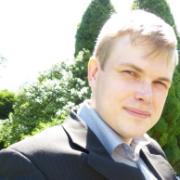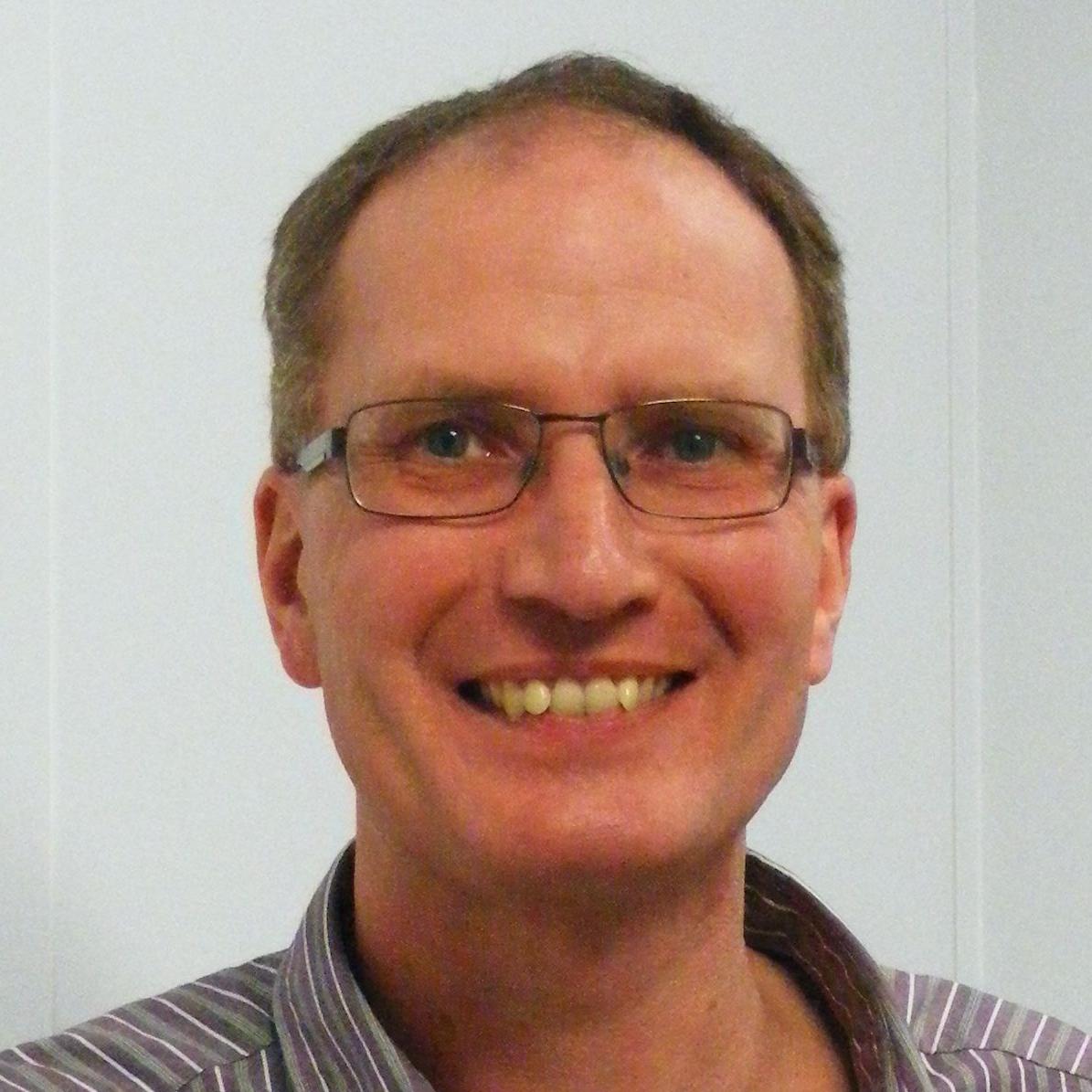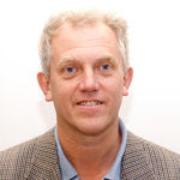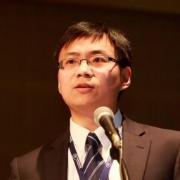CMRI staff
Staff
This is a list of CMRI staff. Our postgraduate researcher profiles can be found on our dedicated webpage.
|
|
Quantum thermodynamics Our research focusses on providing theoretical understanding of thermodynamics at the nanoscale. Specifically, we investigate the importance of small scale fluctuations and non-equilibrium effects within stochastic thermodynamics and investigate the impact quantum effects, such as coherences and entanglement, have on thermodynamic processes. Please see here for more information about the Quantum Group. Group page |
|
|
Magnetic materials and transducers The magnetic response of magnetic materials due to the interaction with electromagnetic fields is influenced by the magnetic properties, shape and size of the magnetic structure. Controlling the shape and size of the magnetic structure or constituents offer enhanced magnetic response, tuning capability and improved material aspects (mechanical, electrical, thermal and optical) for manufacturing and industrial applications. Magnetic and elastic waves can also be generated in magnetic materials using designed electromagnetic and bias field transducers for non-destructive testing of magnetic structures, and for signal transmission, storage and processing. Group page |
|
|
Light-Matter Coupling - Linking molecules with light Traditionally, making molecules with new properties, e.g. dyes of different colours, has been the province of chemistry; new properties are based on making new molecules. Our approach is fundamentally different- we use light to alter the way molecules interact with each other, something that can lead to radical changes in their properties, without changing their chemical composition. We use two related techniques known as strong coupling and weak coupling. Group page |
|
|
The properties of light transport in disorder and "complex" media Disorder is often considered to be a hindrance. It reduces the performances of otherwise carefully designed devices, scatters and scrambles signals, and it is difficult to describe with simple deterministic models. But as much as people try to minimize disorder, it is impossible to ever completely remove it. Instead, our research aim is to understand and exploit disorder. Our approach is to study the correlations due to the fact that, despite difficult to completely characterize, disordered system are still deterministic at a fundamental level, and use them to extract information that is usually considered lost. In particular we focus on the problem of imaging in turbid and highly scattering media. |
|
|
Nanoscience and Nanotechnology My research expertise spans across applied research in nanotechnology, electronic and optoelectronic devices to fundamental research in nanoscience (quantum phenomena, molecular electronics, nano electronics, spintronics) and materials science.
Group page Nano Engineering Science and Technology Group |
|
|
Imaging in turbid media Most opaque material are so because of their mesoscopic structure (they are effectively random metamaterials). Imaging through them is difficult due to the randomness, but controlling light propagation allows us to side-step this problem. Group page |
|
AI and metamaterials - Utilising Artificial Intelligence and big data to model the next generation of materials for bespoke applications I am working at the dynamic interface between engineering, applied mathematics and high performance scientific computing. My research interests in modelling complex materials for industry-motivated problems, integrating understanding of engineering materials, mathematical models, numerical methods and their implementation across massive computer archictectures. Group page |
|
|
|
High Temperature Polymeric Additive Manufacture Please also see Exeter Technologies Group and Centre for Additive Layer Manufacturing (CALM) for more information. Group page |
|
|
THz materials, imaging and spectroscopy; Nonlinear optics We explore the potential for developing new THz components and sensors to fill the so called “THz gap”, utilizing novel magnetic and plasmonic responses of many materials in this region, and are currently working on novel methods for imaging in this difficult spectral region. We also work in plasmoncs, and explore the possibility of replacing coinage metals with new materials such as graphene and ITO. These materials have tuneable electromagnetic responses, as free electrons can controllably introduced by chemical, electrical or photo- doping, making the manipulating light on extreme sub-wavelength length scales possible, and we focus on enhancing nonlinear optical responses for optical switching etc. Group page |
|
|
Quantum mechanics and its applications to materials At the atomic scale, we can engineer materials to have unusual properties not seen in the normal bulk material. To do this we have to understand and control the behaviour of individual atoms, particularly at the interface between two materials. Our research is focused on the atomic level manipulation and control of interfaces to both make new devices, and to better understand existing devices. This has application in several areas including energy storage (batteries), energy harvesting (thermoelectrics and solar), quantum metamaterials and 2D materials. We explore the role of electronic and thermal transport in materials, as well as optical properties and characterisation. Group page |
|
|
Acoustic and elastic metamaterials Acoustic and elastic metamaterials are composite materials, typically with small resonant inclusions, which have been designed to control, direct, and manipulate sound or mechanical motion. There is a drive towards ever increased device performance and functionality, and metamaterials offer an opportunity to look beyond naturally-occurring materials since they can be engineered to have completely artificial behaviour. Microwave and RF Metamaterials Our research work is built around developing and studying structured metallic surfaces and metal-dielectric or ferrite-dielectric composites that exhibit novel and valuable phenomena. The vast majority of our studies are based around 3D metamaterials, or 2D metasurfaces. Our work on 2D metasurfaces is associated with the control of surface wave propagation through local control of the surface impedance boundary condition, and we are interested in 3D metamaterials to create novel electromagnetic properties than can be chosen at the point of design using the shape, size or spacing of resonant inclusions within a passive host. Compact and directional antennas, signature control, imaging and sensing, beam steering, frequency selective wallpaper, electronic tagging, and energy harvesting are just a few of the application areas that benefit from our research. Group page |
|
|
Magnetic and spintronic materials and devices The spin angular momentum of the electron underlies the magnetism of materials with permanent magnetic order and is manipulated in spintronic devices. The non-volatility of magnetic order, and the resulting energy efficiency of magnetic and spintronic devices, is highly attractive for information technology. We use a combination of electrical, microwave, optical and x-ray measurement techniques to study new materials that can be controlled at the nanoscale and down to femtosecond timescales to provide improved device functionality. Group page |
|
|
RF and microwave metamaterials The RF and mm-wave frequency bands are becoming ever more techologically important, with the ongoing push to increase data bandwith in wireless communications requiring the use of higher frequency radiation than was historically the case. As a result, novel devices to control the electromagentic environment at these frequencies are required, whether they be emitters and receivers (antennas), or absorbers, beam steerers, etc. In particular we are interested in devices that are reconfigurable and/or frequency-agile, and the role that metamaterials may have in such devices. Group page |
|
|
Acoustic and thermal devices We study the generation, control and interaction between sound, heat and electricity in materials. The focus of our experimental research is to study the fundamental physics of acoustic, thermal and electrical transport both within materials and across interfaces between materials. This has direct application in sound production, heat management in electronics, and improved efficiency of electronic devices. We also investigate the ways in which these properties can be used for active sensing, which includes detection of gas and fluids as well as electrical and thermal features of materials. Our work extends into biological systems, including biomimetics, thermoregulation in insects and electrical signalling in plants and animals. Group page |
|
|
Theory of electromagnetic and acoustic materials Design of electromagnetic materials: Suppose you want to do something to a wave; perhaps redirect a radio wave, or absorb a sound wave. I use mathematics to look for the materials you need. I am interested in the theory of electromagnetism and wave physics in general. Recently I've been thinking about how waves reflect from metamaterial structures, but I also work on the theory of quantum electromagnetism in dielectric media (I am interested in understanding how macroscopic bodies affect the quantum properties of the electromagnetic field, and how these in turn affect the motion of the object). Group page |
|
|
Quantum Nanophotonics Optoelectronic devices, which generate, manipulate and measure light, underpin modern communication and have enabled the internet to revolutionise the modern world. A new generation of quantum optoelectronic devices, which process light at the single photon level promise a further revolution in the way we communicate, measure and process data. Individual photons, the elementary particles of light, are the building blocks of this technology, but must first be generated by single photon sources. For practical applications the photons must be generated on-demand, at high repetition rates and must be indistinguishable, in other words identical in all degrees of freedom (for example energy and polarisation). My research is centred around the development of such devices through the exploration of novel materials and their nanophotonic integration. Group page |
|
|
Magnonics We study phenomena associated with spin waves (elementary excitations of the magnetic order) and magnons (their quanta). Spin waves carry energy and angular momentum via a collective wave motion of spins. So, the relation between magnonics and the rest of spin physics (aka spintronics) is akin that between the ac and dc electricity. Magnonics offers the perspective of technology that would use spin waves (or magnons) to carry and process both analog signals and digital data. The most attractive features of this technology are the low power, magnetic reconfigurability and scalability to nanometre dimensions. Group page |
|
Theoretical condensed matter physics I recently started a new research project on collective plasmons in arrays of metallic nanoparticles. Here we showed how interactions between the nanoparticles give rise to a tunable plasmonic bandstructure, with the emergence of chiral bosonic Dirac-like quasiparticles in 2D honeycomb arrays. Group page |
|
|
|
Optical and Acoustic Materials and Devices Within the Nash group we explore the fascinating characteristics of new materials including 2D materials- for example graphene, and metasurfaces. We both investigate fundamental phenomena, such as the interaction of light with molecules, but also aim to exploit these phenomena to create novel technology. Group page |
|
|
Wearable technology This line of research uses 2D materials, such as graphene, as active layers for a wide range of electronic devices based on flexible and textile substrates. These materials offer a wide range of properties of interest, allied to a very small size, lightweight and flexibility, which makes them ideal for truly wearable devices. These devices go well beyond bulky commercial accessories embedded in clothes and, when endowed with with wireless communications, have an enormous transformative potential for applications such as remote healthcare or energy harvesting. Group page |
|
|
Bio-inspired magnetic systems Many microorganisms in the natural world have developed properties which could be invaluable for our technologies. Even a ‘simple’ motion or moving liquid at microscale can help us to revolutionise a range of practices used in medicine and biotechnology. In this research we use magnetic materials to help us creating microscopic machines that would be able to mimic micro-organisms. As well as building and controlling them the main challenge of the research is to find the ways to recreate the mechanics of the biological systems in the highly viscous environment which they are exposed to. Our research is highly interdisciplinary, and as well as the magnetic phenomena includes such disciplines as hydrodynamics, microfluidics, mechanics and electromagnetism. Group page |
|
|
Quantum materials and spectroscopy Transition metal dichalcogenides are a novel platform for quantum optics. They are optically active, semiconducting layered materials which can be exfoliated from their bulk crystals to monolayers can be re-assembled to vertical heterostructures by stacking. These layered materials (LMs) are promising for fast optoelectronics and on-chip photonics. We demonstrated the existence of quantum light emitters in atomically thin TMD layers. Raman spectroscopy and photoluminescence is the primary tool to characterise layered materials and heterostacks used as platform for quantum optics. These techniques can identify TMDs, extract the number of layers, doping, quality of the material. Group page |

|
Membrane transport in antibiotic resistance Bacteria exchange molecules with their environment taking up molecules essential for subsistence while excluding poisonous molecules such as antibiotics. They do so by using proteins that form physical pathways for molecular transport across membranes, these pathways being at the basis of antibiotic resistance, one of the most challenging problems for our society. Using a metamaterials approach through microfluidics and imaging I study the fundamental diversity in the capability to take up molecules in bacteria aiming to understand which physical pathways are used by individual bacteria to achieve this diversity. The new knowledge that I am developing will provide guidelines for the optimisation of antibiotic therapy in killing infecting bacteria. Group page |
|
|
Biophotonics and Biomechanics The mechanical properties of biological tissues are central to their function and impairment is implicated in ageing and disease. Changes in the macroscopic mechanical properties and tissue structure and composition are both well characterised, but the causal relationships between them are largely unclear. A novel microscopy technique based on Brillouin light scattering from acoustic waves at GHz frequencies has emerged for the contactless 3-D probing of tissue mechanics at the microscopic and subcellular levels. In Exeter we advance the development and applications of Brillouin microscopy as a novel optical technique within biophotonics and the clinical environment. Group page |
|
|
Mechanics and electrostatics of soft and biomembranes My research interests are in the area of membrane biophysics, with emphasis on the relationships between membrane composition, mesoscopic lateral ordering, physical properties and biological function. Much work is carried out on the use of nonlinear optical imaging techniques, such as Coherent Anti-Stokes Raman Scattering (CARS), Stimulated Raman Scattering (SRS) and Multiphoton Fluorescence (MF) to investigate protein-membrane interactions and uptake of fatty acids by cells. Key words: Low Reynolds number propulsion, statics and dynamics of wetting. Group page |
|
|
Structured light I work on spatial structuring of infra-red and visible light for a variety of applications to imaging, optical trapping and optical communications. Dynamic light shaping is achieved using liquic crystal spatial light modulators and digital micro-mirror devices. We are also developing new methods to create compact light transforming optics using direct laser writing (microscale 3D printing). Group page Biomedical Physics |
|
|
Quantum Systems and Nanomaterials My research group is pioneering the novel science found in nano-systems. In particular, we are currently studying the electrical properties of graphene materials, which are just one or few carbon atom thick with honeycomb structure. In these materials charge carriers have a record high mobility at room temperature and behave as massless Dirac fermions. Our main research directions are
Group page |
|
|
Electromagnetic and acoustic materials Waves change their speed when going from one material to another - refraction. By structuring materials on the scale of the wavelength of the wave, creating so-called metamaterials, it is possible to create, by design, remarkable effects such as negative refraction or phase speeds approaching infinity. Using microwaves (wavelength of order mms) or sound (wavelength of order cms) it is relatively straightforward to make novel materials with properties not otherwise obtainable. This leads on to potential applications such as perfect radar absorbers or holey screens which allow air through but little sound. Since microwave communications and sound play such vital roles (mobile phones, TVs, radio etc.) in our everyday lives the fundamental research being here undertaken on novel metamaterials may have very significant sociological impact. Group page |
|
|
Biomedical Imaging and Biosensing As Professor of Biomedical Imaging and Biosensing I am working at the interface between physics, engineering and medicine. Group page Biomedical Physics |
|
|
Single-Molecule Biosensors Sensor systems have emerged that exhibit extraordinary sensitivity for detecting physical, chemical, and biological entities at the micro/nanoscale. Particularly exciting is the detection and analysis of molecules on miniature devices that have many possible applications in health, environment, analysis, and security. Group Page Living Systems Institute (LSI): Vollmer Laboratory of Nano and Quantum Biosensing |
|
|
Active/Reconfigurable Metasurfaces; phase-change materials Conventional metamaterials and metasurfaces (the 2D form of metamaterials) are ‘fixed-by-design’, with performance determined by the form of their resonating structures and the properties of the materials of which they are made. Far greater functionality and application would be available if we could develop active versions, i.e. metamaterials whose response can be dynamically adapted, tuned or reconfigured. At Exeter we are doing just this, using chalcogenide phase-change materials to deliver active optical metasurfaces that can work from the UV right out to the THz, and with applications ranging from LiDAR to multispectral imaging, optoelectronic displays, chemical sensing and much more. Group page |
|
|
Nanomaterials for energy My research covers a broad spectrum of nanomaterials and nanocomposites, with specific interests in functionality and their applications. The core research focus is to synthesize and characterise novel functional nanoporous materials, to understand the growth mechanisms, to assess their advanced mechanical and physical properties, and to apply these interesting functional nanoporous materials for practical applications in a diverse areas, from energy storage and conversion to nanodevice construction, from solar energy creation to hydrogen energy storage and greenhouse capture and conversion, and from photocatalysis and environmental catalysis for renewable energy to lightweight wearable engineering devices. Group page |
|
|
Metamaterials for energy harvesting and wireless power transfer Energy harvesting concerns conversion of unused or wasted energy in the environment into electrical energy to power small electronic devices such as wireless sensors. Exploitation of metamaterials in energy harvesting will enhance coupling between transducers and ambient energy sources to improve its energy conversion efficiency. Furthermore, EM metamaterials can improve directionality of RF signal and thus improve power transmission efficiency of wireless power transfer systems. Group page |
|
|
Functional Materials My team's fundamental research focus is on the synthesis and characterization of 1-dimentional structures, from carbon nanotubes to other transition metal oxide nanowires, sulphide nanotubes and complex functional metal oxides with 1-D, 2-D and 3-D structures, using techniques such as chemical vapour deposition, solid state and soft-chemistry synthesis. Nanocomposites fabrication using these novel nanostructures is also a main research focus. The processing parameters, structural features and interfacial reaction that underpin the physical and mechanical properties of these nanocomposites lie in this category. Furthermore, the performance of the new nanomaterials and nanocomposites under very high pressures, dynamic and static, covers the third aspect of my team's fundamental research. Group page Nano Engineering Science and Technology Group |



.jpg)








.jpg)
.jpg)
.jpg)
.jpg)




_(1).jpg)
.jpg)
.jpg)
.jpg)
.jpg)



.jpg)

